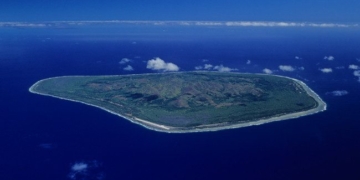When mentioning lakes, many people immediately think of gentle ripples, clear blue waters, breathtaking scenery, and a soft breeze that stirs the soul.
In general, every city has its small artificial lakes, while nature holds many masterpieces created by the Earth itself.
You all know that lakes are typically bodies of water, but not all lakes are filled with water. The lake discussed in this article is one that does not contain water; instead, it is filled with asphalt and an endless resource, which is why it is also known as a pitch lake.
On the island of Trinidad in the Caribbean Sea, there is a unique lake. This lake does not hold much water, but it accumulates vast amounts of asphalt. In addition to tens of millions of tons of asphalt, this lake also contains unimaginable prehistoric treasures beneath its surface.
Asphalt – a compound extracted from petroleum – is well-known to everyone. However, there is also natural asphalt in its solid form around the world. It can seep up from the ground, forming large asphalt pools. It can also intermingle with sand, as seen in the Athabasca tar sands in Canada. Uniquely, asphalt can even be found at volcanic sites on the ocean floor.
The surface of the lake glimmers with a color akin to black tar, resembling a bucket of black paint. Interestingly, it seems that the asphalt continuously replenishes itself. Since 1870, asphalt has been mined here for hundreds of years, with tens of thousands of tons extracted each year, yet the lake’s surface has not lowered.
Therefore, curious individuals began to investigate and study it. However, determining the lake’s depth proved to be a challenge.
They discovered that when measuring tools penetrated the lakebed to nearly 100 meters deep, they still had not reached the bottom. The entire Pitch Lake is described as a gigantic “spring” of natural asphalt. There is likely vast amounts of asphalt being pushed to the surface through continuous geological movements.
At the lake’s bottom, there is a very soft area of asphalt that continually oozes out, referred to as the “mother of the lake.”
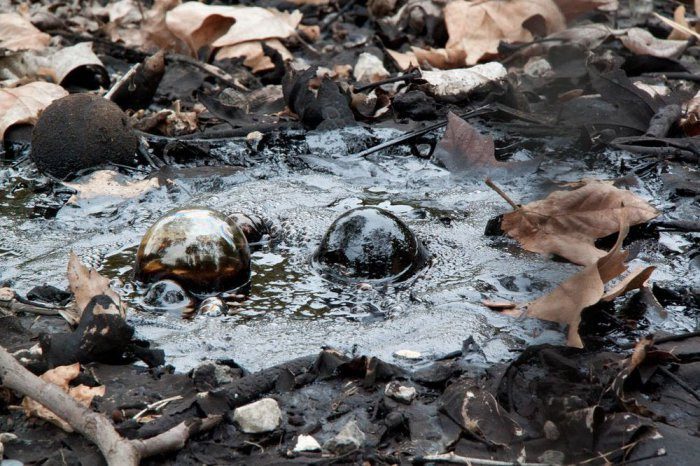
Pitch Lake in Trinidad contains a lot of asphalt.
The surface area of the lake is only 0.44 km2, but notably, during the mining process, prehistoric bird and animal fossils, as well as artifacts and weapons from ancient Indians, are often discovered. Therefore, the pitch lake is also known as a natural history museum.
The asphalt in Pitch Lake is quite thick and viscous, allowing people to walk easily across its surface. However, if you stand still in one spot on the lake, you will slowly sink.

You can walk freely on the asphalt surface but should not stand still.
At first glance, the asphalt on the lake’s surface appears to be still. But upon closer observation, you will see that the asphalt is constantly in motion. Logs and animals that fall into the lake will gradually sink and, after some time, resurface.
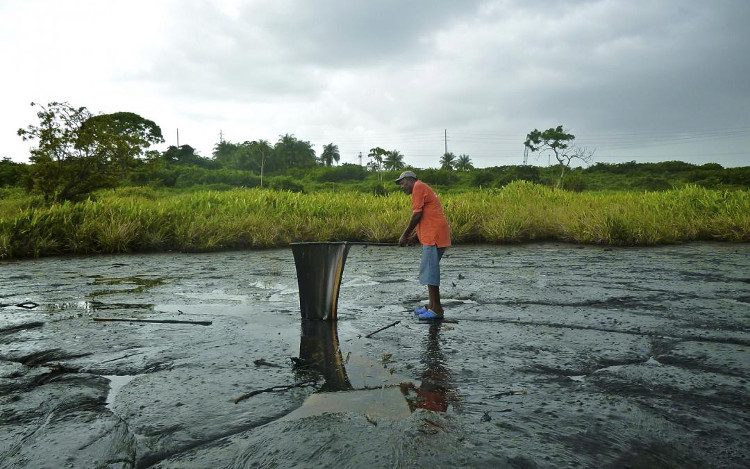
The asphalt at Pitch Lake has a history of thousands of years, due to oil seeping from underground.
Pitch Lake has existed for thousands of years. The movement of the Caribbean tectonic plate collided with other plates, creating fractures that allow crude oil to seep to the surface. The lighter elements in the oil evaporate, leaving behind asphalt, which is a mixture of oil, clay, and water.
The pitch lake was discovered in 1595 and has been mined since 1867. To date, approximately 10 million tons of asphalt have been extracted, with around 6 million tons remaining. Each year, about 20,000 tourists visit Pitch Lake.
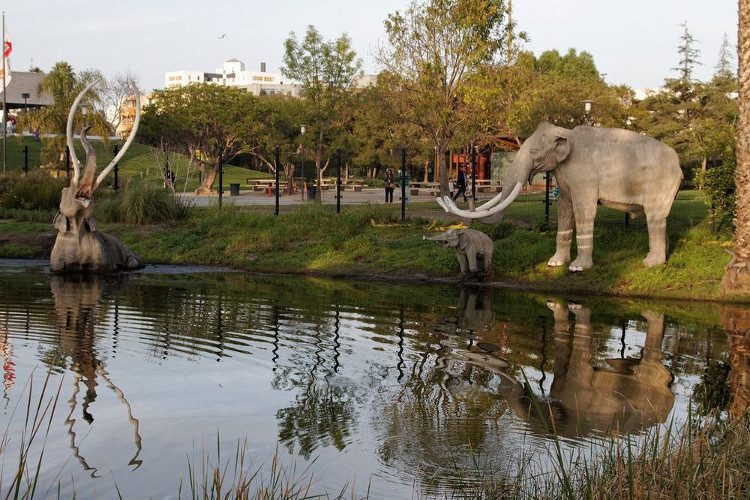
Pitch Lake is the largest pitch lake in the world.
In addition to Pitch Lake, there are many other pitch lakes around the world in the USA, Venezuela, Iraq, and more. Many biologists believe that beneath these pitch lakes lies an entire historical era spanning thousands of years. Prehistoric animals like saber-toothed tigers, ancient wolves, bison, horses, turtles, and woolly mammoths once fell victim to this pitch lake. They could have suffocated or starved, and their fossils remain trapped beneath the asphalt layer.
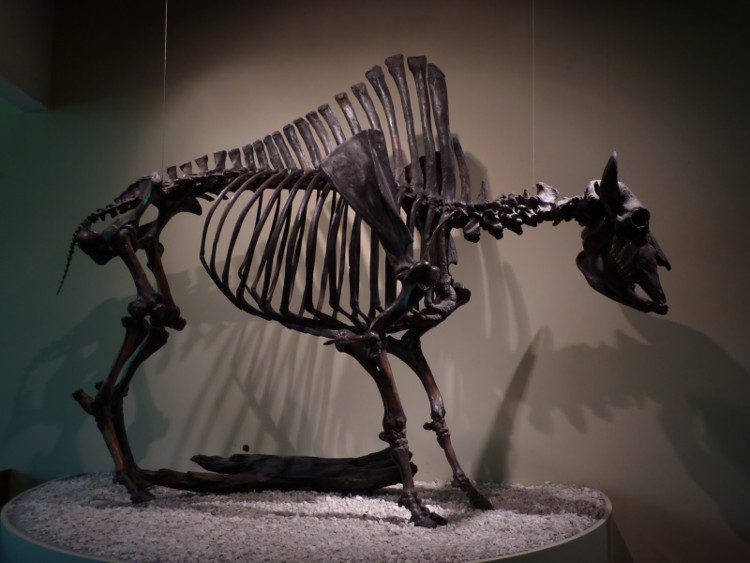
There are many fossils beneath the asphalt.
Scientists report that 90% of the fossils found in pitch lakes are of predatory animals. At Pitch Lake, 4,000 snow wolf fossils have been discovered. Saber-toothed tigers number around 2,000, with North American wolves being the third most common. Even some prehistoric carnivorous bird species have been trapped here.
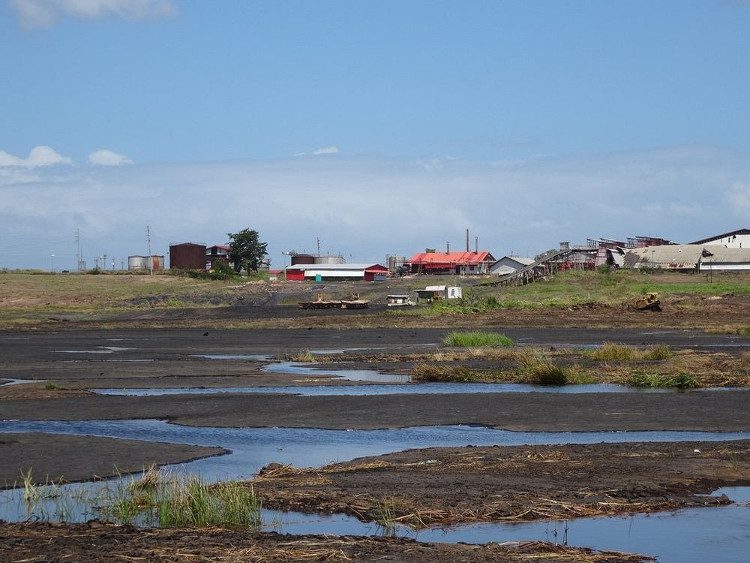
Asphalt mining activities at Pitch Lake.

It can be said that within the pitch lake lies an invaluable treasure. Thousands of fossils of trapped animals have been found beneath the lake.
Today, this site is not only an industrial mining facility but also a popular tourist destination. The natural beauty is always magnificent and majestic. If you have the opportunity to travel to Tobago, you must visit this marvelous pitch lake.

















































